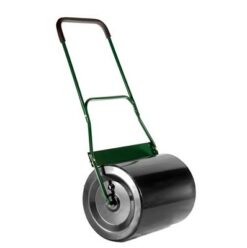Showing 1–1 of 1 products
Cobra
£69.98 inc VAT
WAS £79.99
How does a Lawn Roller work?
Normally when spring arrives, it’s time to start working on your lawn. You might be putting down sod, planting grass seed, or flattening molehills. Lawn Rollers help you take care of your lawn quickly and easily, no matter what you need to do.
Lawn rollers are like “mini steam rollers” that are cylinder-shaped and have extra weight (usually water or sand) to help level the ground. You can choose a push lawn roller that you have to move across the yard by hand. You can also choose an attachment that hooks onto the back of your tractor and rolls behind you as you drive. Even though pull-behind rollers are usually more expensive than push rollers, they tend to get the job done faster and with less effort. Most rollers are made of steel or poly, and they come in a range of sizes and weight capacities.
How to Use a Lawn Roller?
For Sod: You can use a roller to make sure the ground is nice and flat before you put down sod. After getting rid of any existing plants, tilling the ground, and adding fertiliser, you can roll over it to make it flat. You should keep doing this until the ground is firm enough that your feet don’t sink when you walk on it. After putting down the sod and watering it, use a roller to get rid of any air pockets and press the sod down to make sure the roots touch the soil. This will help the sod get a good start and help it grow better.
For Seed: After you till the ground and spread the seed, you can use your lawn roller to roll the soil and make sure the seeds touch. After you plant a seed, rolling it helps press it into the soil so it doesn’t blow or wash away. It also speeds up the process of the seed sprouting.
If your lawn has been damaged by frost heaves or mole hills, you can fix the damage with a lawn roller. A heavy lawn roller can be used to pack down hills and tunnels. This will help stop the air pockets that were made by the damage from drying out the roots of the grass.









